Preliminary: Process Physics: Modelling Reality as Self-Organising Information (Reginald T. Cahill, Christopher M. Klinger and Kirsty Kitto)
(Some background reading to assist with understanding the deeper quantum processes of life)
Overview:
This article (and the "Zeno's Paradoxes" section of this website) details the fundamental and irrevocable failure of standard scientific (Newtonian) solutions to the paradox of movement: the great bulk of science is now failing to fit theory with (quantum) fact. A fuller, more congruent philosophy (or 'world-view') is needed to account for the evidence.
The old Darwinian, competitive and manipulative models of biological development (that fail to accommodate cooperative nonlocal influences and connectivity) are no longer tenable or sustainable in the face of this new evidence. A new holodynamic systems model (one that includes a discontinuous-space | continuous meta-space duality) is required.
...(the idea) that space is continuous is, I believe, wrong.
— Professor Richard Feynman
The Messenger Series: Seeking New Laws
Background:
Around 2,400 years ago a Greek philosopher (Zeno of Elea) questioned how anything or anyone moves around. Theoretically, for anyone to lift a finger, bat an eyelid, or even to fall down requires we move through a seamless but endless (never-ending) progression of ever-so-small little movements. He highlighted how there appeared to be a mismatch between our theories (of moving through endless physical steps) and our simple, everyday practical experiences.
The widely cited and accepted standard (infinite-series) solutions to Zeno's Paradoxes highlight how majority scientific opinion is no longer congruent with the facts (of quantum physics), in that with the infinite series solutions there are NO demonstrable or even theoretical 1:1 correlations of mathematical points with physicality (for there to be such, a strict correspondence of mathematical values with physical location and momentum would need to be demonstrated at and below Planck times and distances.
None have been shown or theoretically advanced.
Infinite-series theories do not -- and due to Heisenberg's Uncertainty Principle can not -- fully correspond with physical reality. Simply put, infinite-series solutions do not fit the facts.
A chasm has developed in the understanding and thinking of the great majority - a chasm that might best be characterised as humanity's "Peak Disconnect" (of theory with fact, of conscious with unconscious, of local with nonlocal, of physical with metaphysical). This cultural disconnect has limited our imagination, potentials and responsibility to realise extraordinary, beneficial systems of actuality quite possible with an expanded awareness and meta-science.
Other articles in this section at this website go into greater detail as to the nature and cause of that disconnect in the psyche of people. Ironically1 it is scientists who are now failing to apply the scientific method in response to the evidence of quantum physics.
The resistance to asking questions and constructing new theories that explain experimental evidence, particularly anomalous phenomena, is a common human experience, and can be understood to be, in part, the practical expediency of "getting on with life" – in practical terms, if we had to question every move, or belief we held, most would get very little done. As covered in "The Evolution of the Human Psyche" this is partly due to our racial immaturity.
However there are quite deleterious consequences emerging as a result of not revising our world-view to accommodate the facts. As covered in more detail in "The Travesty of Modern Science" the widespread failure of scientists and philosophers to expand their thinking and awareness is due to short-term expediency, greed and fear (which, as stated above, is largely due to immaturity).
Are space and time infinitely divisible?*
Another solution to some of the paradoxes is to consider that space and time are not infinitely divisible. Just because our number system enables us to give a number between any two numbers, it does not necessarily follow that there is a point in space between any two different points in space, and the same goes for time..
If space-time is not infinitely divisible (and thus not perfectly continuous), it is "discrete" (composed of “lumps” and “jumps” as is experimentally observed in the field of quantum physics (e.g. electrons jumping from one level to another) and affirmed theoretically (as physicist David Bohm emphasised, "according to the quantum theory, movement is not fundamentally continuous.")2. Ipso facto the "gaps" between the “lumps” (quantum excitations or perturbations) that comprise space-time will remain immeasurable and intangible (in accord with the Uncertainty Principle).
In fact, if movement of physical things was perfectly continuous, according to physicist Richard Morris, Maxwell's equations predict "that electrons circling an atomic nucleus would radiate energy so rapidly that atoms should quickly collapse."3
As British physicist Paul Davies has pointed out, "the energy released under such circumstances should have been infinite."4 As Morris goes on to explain, "If both Rutherford's theory and classical physics were correct, there should be no atoms, no matter as we know it, and, of course, no physicists."5
Some scientists and engineers (e.g. Norman Friedman) have likened space-time as being "projected" (actualised) like a motion-picture film, that "...our reality is more like a motion picture, but with the individual frames going by extremely fast—at the undetectable interval of the Plank time,6 and that, by some estimates, "our universe is flickering on and off every 5.3 x 10-44 seconds".7 (i.e. it is continually regenerating (pulsing, unfolding/enfolding) at a rate of around 19 billion trillion trillion (1033) gigahertz - (the inverse of the Planck time)).
--Jane Roberts (Seth)
As physicist Fred Alan Wolf explained:
"At the smallest level of space-time-matter, space-time is continually fluctuating— creating momentary bubbles of matter, which just as quickly vanish into nothingness again."8
Other physicists have since suggested much the same. Using slightly different terminology, two Australian physicists Reginald Cahill and Christopher Klinger have suggested that
"space and time and all the objects around us are no more than the froth on a deep sea of randomness."9
More directly, Cahill noted that:
"Far from being merely associated with quantum measurements, this randomness is at the very heart of reality ... randomness generates everything, it even creates the sensation of the 'present.' Randomness is more fundamental than physical objects."10
Within this conceptual framework  — that our space-time is flickering on and off — perfectly smooth movement is, like a motion-picture film, an illusion, as Zeno originally posited. As physicist Fred Alan Wolf wrote
— that our space-time is flickering on and off — perfectly smooth movement is, like a motion-picture film, an illusion, as Zeno originally posited. As physicist Fred Alan Wolf wrote
"Werner Heisenberg was ... awarded the Nobel prize in physics for his realization that Zeno was correct after all."11
If space-time is discrete, then our space-time flickering requires instant nonlocal (super-luminal) interconnections (as speed-of-light connections will not be quick enough to orchestrate the in-phase flickering that gives rise to the order and solidity that we readily experience).
"At Cambridge University, mathematician Noah Linden and physicist Sandu Popescu have found that in the typical quantum state occupied by any group of particles the links between the particles are mostly of a nonlocal character. Quantum theory isn’t just a tiny bit nonlocal. It’s overwhelmingly nonlocal. Nonlocality is the rule for our Universe."12
As physicist Nick Herbert explained
"without faster-than-light connections, an ordinary object model of reality simply cannot explain the facts."13
A discrete space-time model supports the theoretical and experimental proof of spatial and temporal nonlocality (Bell’s Theorem). (See also John Archibald Wheeler's Delayed Choice Experiments)
As physicist Nick Herbert emphasized
"any correct model of reality has to incorporate explicit non-local connections. No local reality can explain the type of world we live in. Furthermore, since Bell's result is based on experimental facts, it is independent of whether quantum theory is correct or not."14
The idea that our physical system is flickering on and off carries with it many implications. For example, it might provide a framework by which to expect that any out-of-phase flickering will (constructively or destructively) interfere with our in-phase physicality, thus accounting for the experimentally observed results in the single-photon double-slit experiments.
As Oxford University physicist David Deutsch explained
"single-particle interference phenomena unequivocally rule out the possibility that the tangible universe around is all that exists."15
According to physicist David Bohm, the nonlocal "common ground" from which all physical entities are continually unfolding is an implicate order which is everywhere and every-when interconnected, at-once. According to Bohm a nonlocal, implicate order together with our everyday physical reality (what Bohm called an explicate order) constituted a "single undivided whole, in which analysis into separately and independently existent parts has no fundamental status."16 (see also Bohm's Holomovement).
Similarly, according to physicist and astronomer Victor Mansfield we exist
"in a radically interconnected and interdependent world, one so essentially connected at a deep level that the interconnections are more fundamental, more real than the independent existence of the parts."17
A perception of wholeness was also voiced by one of the pioneers of quantum physics Erwin Schrödinger who wrote:
"There is obviously only one alternative, namely the unification of minds or consciousness. Their multiplicity is only apparent, in truth there is only one mind."18
and
"Inconceivable as it seems to ordinary reason, you—and all other conscious beings as such—are all in all. Hence this life of yours which you are living is not merely a piece of the entire universe, but is, in a certain sense, the whole."19
The idea of "wholeness" has parallels with those espoused by Zeno's teacher Parmenides -- that "the reality of the world is 'One Being': an unchanging, ungenerated, indestructible whole".
This perception of "undivided wholeness” or "Oneness" is echoed in various spiritual and (typically Eastern) religious traditions, such as ...
- Hinduism "By understanding the Self, all this universe is known" (Upanishads);
- Brahman-Atman Yoga in which "Brahman" (God) and "Atman" (Individual souls) are considered one;
- Islam, "He who knows himself knows his lord," (Muhammad);
- Confucianism, "Heaven, earth and human are of one body";
- Zen Buddhism, "Look within, you are the Buddha";
- Christianity, "The Kingdom of God is within you";
- Jewish Kabbalah, "if one contemplates things in mystical meditation, everything is revealed as one."20
[the following material was also deleted by Wikipedians, but originally included by Stephen Pirie]
Status of the paradoxes today
... with the discovery of quantum mechanics, those mathematical (infinite-series) solutions have now been shown to be incongruent with deeper physical (quantum) processes (see above section Are space and time infinitely divisible?). This is quite clearly demonstrated with the failure of calculus (and mathematics generally, as of late 2006) to accurately and reliably describe or predict the transition of quantum possibilities (as mapped by a wavefunction) to observed physical reality - what is generally known as the wave-function collapse.
In other words, as has been experimentally verifed (see above section) as of late 2006, there is no known rule, description, equation or principle which can accurately and fully predict the movement of physical objects at small intervals or scales.
Furthermore, the proposed mathematical solutions using geometric series and calculus are reliant on the assumption of perfect (infinite) divisibility of space-time, an assumption that has not be experimentally or theoretically verified or proven.
In the quantum realm, Zeno's Paradoxes not only remain unresolved, but form the very foundations of science's "most successful physical theory in history"21 as is reflected in Heisenberg's Uncertainty Principle and Bohr's Principle of Complementarity).
These quantum paradoxes (along with Zeno's) have led some physicists to assert that they are a fundamental, irreducible feature of life, including the operation of intelligence. As Physicist David Bohm, Einstein's protégé explained:
The actual operation of intelligence is thus beyond the possibility of being determined or conditioned by factors that can be included in any knowable law ... Intelligence is thus not deducible or explainable on the basis of any branch of knowledge (e.g. physics or biology). Its origin is deeper and more inward than any knowable order that could describe it".22
Additional updates, current research (2010-2011)
Latest experimental developments supporting the granular nature of matter, energy and space-time (February 2009):
"According to Craig Hogan, a physicist at the Fermilab particle physics lab in Batavia, Illinois, GEO600 has stumbled upon the fundamental limit of space-time - the point where space-time stops behaving like the smooth continuum Einstein described and instead dissolves into "grains", just as a newspaper photograph dissolves into dots as you zoom in."
Experimental evidence and theoretical developments that invalidate Newtonian 'clockwork universe' models.
"Most working scientists hold fast to the concept of 'realism' - a viewpoint according to which an external reality exists independent of observation. But quantum physics has shattered some of our cornerstone beliefs. According to Bell's theorem, any theory that is based on the joint assumption of realism and locality (meaning that local events cannot be affect by actions in spacelike separated regions) is at variance with certain quantum predictions.
Experiments with entangled pairs of particles have amply confirmed these quantum predictions, thus rendering local realistic theories untenable. Maintaining realism as a fundamental concept would therefore necessitate the introduction of 'spooky' actions that defy locality. Here we show by both theory and experiment that a broad and rather reasonable class of such non-local realistic theories is incompatible with experimentally observable quantum correlations. In the experiment, we measure previously untested correlations between two entangled photons, and show that these correlations violate an inequality proposed by Leggett for non-local realistic theories.
Our result suggests that giving up the concept of locality is not sufficient to be consistent with quantum experiments, unless certain intuitive features of realism are abandoned."23
Additional developments revealing the deeper superpositioning of whole systems:
(Latest)
Matter-wave interference of particles selected from a molecular library with masses exceeding 10,000 amu.
Physicists Smash Record For Wave-Particle Duality
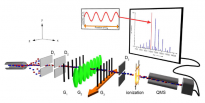 Researchers have observed quantum superposition in molecules containing around 5000 protons, 5000 neutrons and 5000 electrons .
Researchers have observed quantum superposition in molecules containing around 5000 protons, 5000 neutrons and 5000 electrons .
"Sandra Eibenberger at the University of Vienna in Austria and a few pals say they’ve smashed the record for a quantum superposition by observing wavelike behaviour in giant molecules containing over 800 atoms."
read more (Cornell University Library)
Quantum Physics Leaps Into The Visible World
"They cooled their structure to nearly absolute zero, and to their surprise and delight, the structure they created still behaved in a quantum way — a structure you can see with the naked eye."
So now the question is, how far can you go before the laws of quantum mechanics give way to the more familiar rules of our macroscopic world?
Physicist Markus Aspelmeyer of the University of Vienna says physicists are divided on the question of whether or not there's an upper limit.
"I don't think there will be an upper limit. I think there's something very deep and fundamental about the quantum physical laws," he says.
Quantum Behavior In A Classical World
Physicists at the Université de Paris have demonstrated wave/particle duality with a droplet made of trillions of molecules.
The experiment involved an oil droplet bouncing on the surface of an agitated layer of oil. The droplet created waves on the surface, which in turn affected the motion of the droplet. As a result, the droplet and waves formed a single entity that consisted of a hybrid of wave-like and particle-like characteristics.
Quantum wonders: The Hamlet effect
"tests with larger and larger objects - including, recently, a resonating metal strip big enough to be seen under a microscope - seem to show that they really can be induced to adopt two states at once (Nature, vol 464, p 697)."
First quantum effects seen in visible object
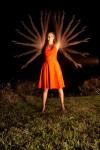 Does Schrödinger's cat really exist? You bet. The first ever quantum superposition in an object visible to the naked eye has been observed.
Does Schrödinger's cat really exist? You bet. The first ever quantum superposition in an object visible to the naked eye has been observed.
Aaron O'Connell and colleagues at the University of California, Santa Barbara, did not actually produce a cat that was dead and alive at the same time, as Erwin Schrödinger proposed in a notorious thought experiment 75 years ago. But they did show that a tiny resonating strip of metal – only 60 micrometres long, but big enough to be seen without a microscope – can both oscillate and not oscillate at the same time.
Quantum Mechanics at Work in Photosynthesis
Untangling the Quantum Entanglement Behind Photosynthesis
DNA waves and water (pdf)
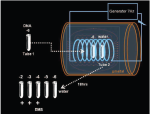 "The above experimental observations fit into the physical view which addresses biological dynamics as an interplay of chemical processes and em interactions; in other words, as an array of em assisted biochemical reactions. We will try to interpret the above experimental results in the framework of a recently proposed theory of liquid water based on Quantum Field Theory (QFT) [6]-[11]. This theory is intrinsically non-linear and it provides the suitable tools to describe a complex ensemble of processes which are also non-linear."
"The above experimental observations fit into the physical view which addresses biological dynamics as an interplay of chemical processes and em interactions; in other words, as an array of em assisted biochemical reactions. We will try to interpret the above experimental results in the framework of a recently proposed theory of liquid water based on Quantum Field Theory (QFT) [6]-[11]. This theory is intrinsically non-linear and it provides the suitable tools to describe a complex ensemble of processes which are also non-linear."
...
"An ensemble of molecules interacting with the radiative em field acquires, above a density threshold and below a critical temperature, a new non-trivial minimum energy state, different from the usual one where the oscillations of the molecules are uncorrelated and the em field is vanishing. The new minimum energy state implies a configuration of the system where all molecules enclosed within an extended region, denominated Coherence Domain (CD), oscillate in unison in tune with an em field trapped within the CD."
Reality check: Closing the quantum loopholes
NewScientist article [ 28 February 2011 by Anil Ananthaswamy, Magazine issue 2801] ]reporting on latest experimental results that confirm the fundamental reality of nonlocality -- influences and connections that occur faster-than-light ('at-once'):
"The question of whether nature is local, realistic or quantum-mechanical is so deep and so important that we should try to do these experiments as cleanly and as loophole-free as possible," says Johannes Kofler, a theorist with the Vienna team...
To ensure freedom of choice for Alice, her random number generator was kept 1.2 kilometres away from the photon source, and the random number generation and emission of photon pairs were timed so one could not influence the other. On Tenerife, the random number generator chose the setting for Bob's detector before the photon arrived from La Palma, ensuring that the source couldn't influence Bob's choice- assuming no influence travels faster than a photon.
The result? Yet again, the experiment violated Bell's inequality spectacularly (Proceedings of the National Academy of Sciences, vol 107, p 19708).
With that, all three major loopholes- locality, fair-sampling and freedom of choice- have seemingly been closed."
See also:
Process Physics: Modelling Reality as Self-Organising Information (Online, html version, this website)24 (pdf)
"The new Process Physics models reality as self-organising relational information and takes account of the limitations of logic, discovered by G¨odel and extended by Chaitin, by using the concept of self-referential noise. Space and quantum physics are emergent and unified, and described by a Quantum Homotopic Field Theory of fractal topological defects embedded in a three-dimensional fractal process-space."
Mind as a reflection of Process Physics and the semantic of reality
"...the literal objects of meaning apparently derive (astonishingly so!) from the limits of logic."
[paraphrasing: within the infinite sea of potential, it is our limitations that define us; that give us character.]
 New Driving Force for Chemical Reactions
New Driving Force for Chemical Reactions
"What we found was that the change (chemical reaction) was being controlled by a process called quantum mechanical tunneling," said Allen, "and we found that tunneling can supersede the traditional chemical reactivity processes of kinetic and thermodynamic control. We weren't expecting this at all."
...
"What we discovered here is that tunneling can dominate a reaction mechanism sufficiently to redirect the outcome away from traditional kinetic control. Tunneling can cause a reaction that does not have the lowest activation barriers to occur exclusively."
Everywhere in a Flash: The Quantum Physics of Photosynthesis
"Almost no energy is lost in between. That’s because it exists in multiple places at once, and always finds the shortest path.
“The analogy I like is if you have three ways of driving home through rush hour traffic. On any given day, you take only one. You don’t know if the other routes would be quicker or slower. But in quantum mechanics, you can take all three of these routes simultaneously. You don’t specify where you are until you arrive, so you always choose the quickest route,” said Greg Scholes, a University of Toronto biophysicist.
Quantum minds: Why we think like quarks
[NewScientist reporter Mark Buchanan reports on how the mathematics of quantum theory is being successfully applied to the behaviour of people, biology and economics]
"People often follow a different way of thinking than the one dictated by classical logic," says Aerts. "The mathematics of quantum theory turns out to describe this quite well."
It's a finding that has kicked off a burgeoning field known as "quantum interaction", which explores how quantum theory can be useful in areas having nothing to do with physics, ranging from human language and cognition to biology and economics. And it's already drawing researchers to major conferences.
 and
and
The way we violate the sure thing principle can be similarly explained with quantum interference, according to economist Jerome Busemeyer of Indiana University in Bloomington and psychologist Emmanuel Pothos of the University of Wales in Swansea. "Quantum probabilities have the potential to provide a better framework for modelling human decision making," says Busemeyer.
...
"The structure of human conceptual knowledge is quantum-like because context plays a fundamental role," says Aerts.
...
Perhaps only humans, with our seemingly illogical minds, are uniquely capable of discovering and understanding quantum theory. To be human is to be quantum.
More evidence found for quantum physics in photosynthesis

"In an experiment published Dec. 6 in Proceedings of the National Academy of Sciences, a connection between coherence—far-flung molecules interacting as one, separated by space but not time—and energy flow is established."
...
"Here we can watch the relationship between coherence and energy transfer. This is the first paper showing that coherence affects the probability of transport. It really does change the chemical dynamics."
They found a clear mathematical link between energy flows and fluctuations in chlorophyll coherence. The link was so clear it could be described in derivative sines and cosines, mathematical concepts taught in college trigonometry.
Corrections to chance fluctuations: quantum mind in biological evolution?
Abstract: According to neo-Darwinian theory, biological evolution is produced by natural selection of random hereditary variations. This assumption stems from the idea of a mechanical and deterministic world based on the laws of classic physics. However, the increased knowledge of relationships between metabolism, epigenetic systems, and editing of nucleic acids suggests the existence of self-organized processes of adaptive evolution in response to environmental stresses.
Living organisms are open thermodynamic systems which use entropic decay of external source of electromagnetic energy to increase their internal dynamic order and to generate new genetic and epigenetic information with a high degree of coherency and teleonomic creativity. Sensing, information processing, and decision making of biological systems might be mainly quantum phenomena. Amplification of microscopic quantum events using the long-range correlation of fractal structures, at the borderline between deterministic order and unpredictable chaos, may be used to direct a reproducible transition of the biological systems towards a defined macroscopic state.
The discoveries of many natural genetic engineering systems, the ability to choose the most effective solutions, and the emergence of complex forms of consciousness at different levels confirm the importance of mind-action directed processes in biological evolution, as suggested by Alfred Russel Wallace. Although the main Darwinian principles will remain a crucial component of our understanding of evolution, a radical rethinking of the conceptual structure of the neo-Darwinian theory is needed.
Entangling Macroscopic Diamonds at Room Temperature
Related Belief Institute Materials
SOS!
Conclusions that can be safely drawn from the immense data available: we live within a Self-Organising System (SOS), a "Self-Organising Sentience" that everywhere and every-when interconnects, in order to effectively self-organize and grow with intent.
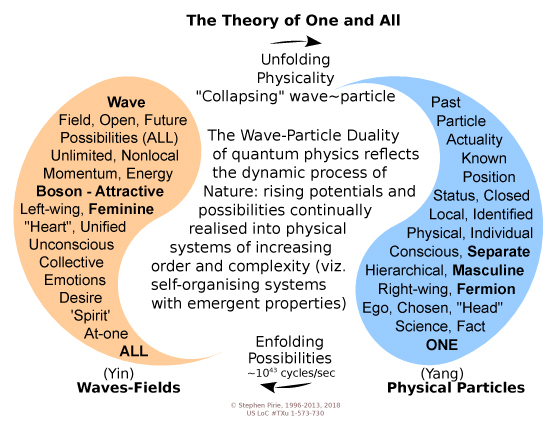
The particle-natured Explicate Order (our normal physical space-time) is discontinuous while the wave-natured Implicate Order (nonlocal ground of all) is continuous.
Everything that has already happened is particles, everything in the future is waves.
[Sir Lawrence Bragg]
Additional commentary
Forum discussions related to Quantum Theory and Zeno's Paradoxes
- Congruent solutions to Zeno's Paradoxes (Hubpages) -- update (Dec.2013): The editors of Hubpages have blocked this article (The full Hubpages article and accompanying comments is available here)
- 1. It is ironic that modern scientists are failing to include the evidence of quantum physics in their world-views, as scientists generally view the Galilean era as having epitomized that failure to observe evidence, and accommodate those observations within a new world-view.
- 2. David Bohm, Wholeness and the Implicate Order, Routledge, London 1995, page 202
- 3. Richard Morris, Achilles in the quantum universe: the definitive history of infinity, Souvenir Press, London 1998, page 79. (Morris labelled the dilemma of the predicted annihilation of the universe, based on classical theory, "The Atomic Catastrophe").
- 4. Morris, page 80.
- 5. Morris, page 80.
- 6. Norman Friedman, The Hidden Domain: Home of the Quantum Wave Function, Nature’s Creative Source, The Woodbridge Group, Eugene OR 1997, page 165.
- 7. Friedman, page 164.6
- 8. Fred Alan Wolf, Parallel Universes, Paladin, London 1991, page 188.
- 9. Marcus Chown, “Random Reality,” New Scientist, 26 February, 2000, reporting on the theoretical work of physicists Reginald Cahill and Christopher Klinger.
- 10. Chown, New Scientist, 26 February, 2000.
- 11. Fred Alan Wolf, Taking the Quantum Leap, Harper & Row New York 1989, page 21.
- 12. New Scientist, Reed Business Information, Sydney, August 22, 1998.
- 13. Nick Herbert, Quantum Reality, Anchor Press/Doubleday, New York, 1985, page 51.
- 14. Nick Herbert, Quantum Reality, Anchor Press/Doubleday, New York, 1985, page 245.
- 15. David Deutsch, The Fabric of Reality, Penguin Books, London 1998, page 47.
- 16. David Bohm, Wholeness and the Implicate Order, Routledge, London 1995, page 174
- 17. Victor Mansfield, Synchronicity, science and soul-making, Chicago, 1995, Open Court, page 226.
The fuller context of Mansfield's quote is:
"Nonlocality or nonseparability in our participatory quantum universe has especially dazzled those working on the philosophical foundations of quantum theory. This recent work presents us with a radically interconnected and interdependent world, one so essentially connected at a deep level that the interconnections are more fundamental, more real than the independent existence of the parts of the quantum system. The great beauty of this result is that it emerges from experiment and analysis that are independent of the theoretical structure of quantum mechanics . . . Therefore we know that nonlocality and acausality must be found in any empirically adequate theory of nature."
- 18. Erwin Schrödinger, What is Life? and Mind and Matter, Cambridge University Press, London, 1969, page 139
- 19. Deepak Chopra, Unconditional Life: Mastering the Forces That Shape Personal Reality, Bantam Books, New York, 1991, page 78 {quoting physicist Erwin Schrödinger}.
- 20. Prof. Amit Goswami, The Self-Aware Universe, G.P.Putnum's Sons, New York, 1995, p. 50
- 21. Paul Davies, J.R. Brown, The Ghost in the Atom, Cambridge University Press, Cambridge 1995, page 84. (Quoting Oxford University physicist, Dr David Deutsch). Other physicists concur. "No theory in the history of science has been more successful than quantum theory."
- 22. David Bohm, Wholeness and the Implicate Order, Routledge, London 1995, p. 52
- 23. Simon Gröblacher, Tomasz Paterek, Rainer Kaltenbaek, Caslav Brukneret, Marek Zukowski, Markus Aspelmeyer, Anton Zeilinger. An experimental test of non-local realism
- 24. Reginald T. Cahill, Christopher M. Klinger and Kirsty Kitto School of Chemistry, Physics and Earth Sciences, Flinders University, Adelaide 5001, Australia

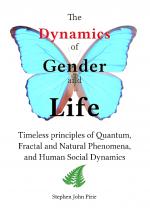 "The Dynamics of Gender and Life" ebook is now available at
"The Dynamics of Gender and Life" ebook is now available at